splunk LB和scale(根本在于分布式扩展index,search)
Forwarder deployment topologies
You can deploy forwarders in a wide variety of scenarios. This topic provides an overview of some of the most useful topologies that you can create with forwarders. For detailed information on how to configure various deployment topologies, see Consolidate data from multiple hosts.
Data consolidation
Data consolidation is one of the most common topologies, with multiple forwarders sending data to a single Splunk instance. The scenario typically involves universal forwarders forwarding unparsed data from workstations or production servers to a central Splunk Enterprise instance for consolidation and indexing. In other scenarios, heavy forwarders can send parsed data to a central Splunk indexer.
Here, three universal forwarders are sending data to a single indexer:
Load balancing
Load balancing simplifies the process of distributing data across several indexers to handle considerations such as high data volume, horizontal scaling for enhanced search performance, and fault tolerance. In load balancing, the forwarder routes data sequentially to different indexers at specified intervals.
Forwarders perform automatic load balancing, in which the forwarder switches receivers at set time intervals. If parsing is turned on (for a heavy forwarder), the switching will occur at event boundaries.
In this diagram, three universal forwarders perform load balancing between two indexers:
Routing and filtering
In data routing, a forwarder routes events to specific hosts, based on criteria such as source, source type, or patterns in the events themselves. Routing at the event level requires a heavy forwarder.
A forwarder can also filter and route events to specific queues, or discard them altogether by routing to the null queue.
Here, a heavy forwarder routes data to three indexers based on event patterns:
For more information on routing and filtering, see Route and filter data in this manual.
Forwarders and indexer clusters
You can use forwarders to send data to peer nodes in an indexer cluster. A Splunk best practice is to use load-balanced forwarders for that purpose.
This diagram shows two load-balanced forwarders sending data to a cluster:
To learn more about forwarders and indexer clusters, see Use forwarders to get your data in Managing Indexers and Clusters of Indexers. To learn more about indexer clusters in general, see About indexer clusters and index replication.
Forward to non-Splunk systems
With a heavy forwarder, you can send raw data to a third-party system such as a syslog aggregator. You can combine this with data routing, sending some data to a non-Splunk system and other data to one or more Splunk instances.
In this diagram, three forwarders route data to two Splunk instances and a non-Splunk system:
For more information on forwarding to non-Splunk systems, see Forward data to third-party systems.
Intermediate forwarding
To handle some advanced use cases, you might want to insert an intermediate forwarder between a group of forwarders and the indexer. In this type of scenario, the originating forwarders send data to a consolidating forwarder, which then forwards the data on to an indexer. In some cases, the intermediate forwarders also index the data.
Typical use cases are situations where you need an intermediate index, either for "store-and-forward" requirements or to enable localized searching. (In this case, you would need to use a heavy forwarder.) You can also use an intermediate forwarder if you have some need to limit access to the indexer machine; for instance, for security reasons.
To enable intermediate forwarding, see Configure an intermediate forwarder.
Scale your deployment with Splunk Enterprise components
In single-instance deployments, one instance of Splunk Enterprise handles all aspects of processing data, from input through indexing to search. A single-instance deployment can be useful for testing and evaluation purposes and might serve the needs of department-sized environments.
To support larger environments, however, where data originates on many machines and where many users need to search the data, you can scale your deployment by distributing Splunk Enterprise instances across multiple machines. When you do this, you configure the instances so that each instance performs a specialized task. For example, one or more instances might index the data, while another instance manages searches across the data.
This manual describes how to distribute Splunk Enterprise across multiple machines. Distributed deployment provides the ability to:
- Scale Splunk Enterprise functionality to handle the data needs for enterprises of any size and complexity.
- Access diverse or dispersed data sources.
- Achieve high availability and ensure disaster recovery with data replication and multisite deployment.
How Splunk Enterprise scales
Splunk Enterprise performs three key functions as it processes data:
1. It ingests data from files, the network, or other sources.
2. It parses and indexes the data.
3. It runs searches on the indexed data.
To scale your system, you can split this functionality across multiple specialized instances of Splunk Enterprise. These instances can range in number from just a few to many thousands, depending on the quantity of data that you are dealing with and other variables in your environment.
In a typical distributed deployment, each instance occupies one of three tiers that correspond to the key processing functions:
- Data input
- Indexing
- Search management
You might, for example, create a deployment with many instances that only ingest data, several other instances that index the data, and one instance that manages searches.
It is possible to combine some of these tiers or configure processing in other ways, but these three tiers are typical of most distributed deployments.
Splunk Enterprise components
Specialized instances of Splunk Enterprise are known collectively as components. With one exception, components are full Splunk Enterprise instances that have been configured to focus on one or more specific functions, such as indexing or search. The exception is the universal forwarder, which is a lightweight version of Splunk Enterprise with a separate executable.
There are several types of Splunk Enterprise components. They fall into two broad categories:
- Processing components. These components handle the data.
- Management components. These components support the activities of the processing components.
This topic discusses the processing components and their role in a Splunk Enterprise deployment. For information on the management components, see "Components that help to manage your deployment."
Types of processing components
There are three main types of processing components:
- Forwarders
- Indexers
- Search heads
Forwarders ingest data. There are a few types of forwarders, but the universal forwarder is the right choice for most purposes. It uses a lightweight version of Splunk Enterprise that simply inputs data, performs minimal processing on the data, and then forwards the data to an indexer. Because its resource needs are minimal, you can co-locate it on the machines that produce the data, such as web servers.
Indexers and search heads are built from Splunk Enterprise instances that you configure to perform the specialized function of indexing or search management, respectively. Each indexer and search head is a separate instance that usually resides on its own machine.
Processing components in action
This diagram provides a simple example of how the processing components can reside on the various processing tiers. It illustrates the type of deployment that might support the needs of a small enterprise.
根本在于分布式扩展index,search
Starting from the bottom, the diagram illustrates the three tiers of processing, in the context of a small enterprise deployment:
- Data input. Data enters the system through forwarders, which consume external data, perform a small amount of preprocessing on it, and then forward the data to the indexers. The forwarders are typically co-located on the machines that are generating data. Depending on your data sources, you could have hundreds of forwarders ingesting data.
- Indexing. Two or three indexers receive, index, and store incoming data from the forwarders. The indexers also search that data, in response to requests from the search head. The indexers reside on dedicated machines.
- Search management. A single search head performs the search management function. It handles search requests from users and distributes the requests across the set of indexers, which perform the actual searches on their local data. The search head then consolidates the results from all the indexers and serves them to the users. The search head provides the user with various tools, such as dashboards, to assist the search experience. The search head resides on a dedicated machine.
To scale your system, you add more components to each tier. For ease of management, or to meet high availability requirements, you can group components into indexer clusters or search head clusters. See "Use clusters for high availability and ease of management."
This manual describes how to scale a deployment to fit your exact needs, whether you are managing data for a single department or a global enterprise, or for anything in between.



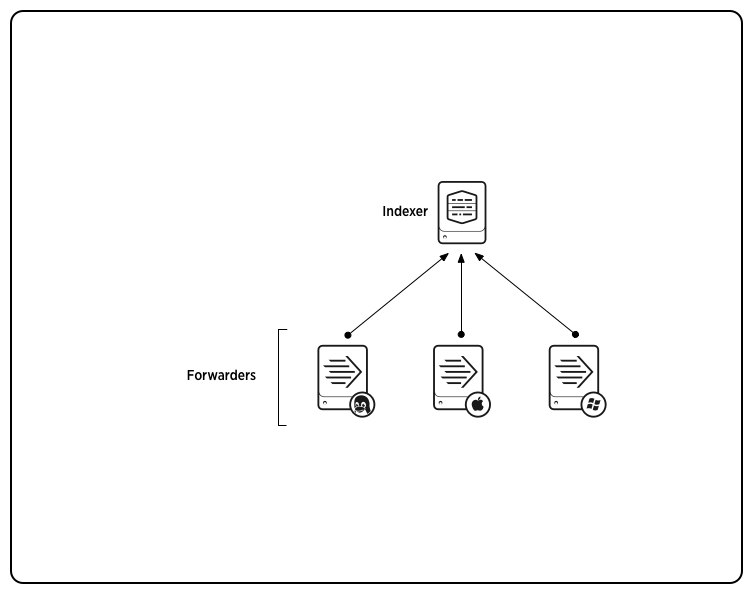
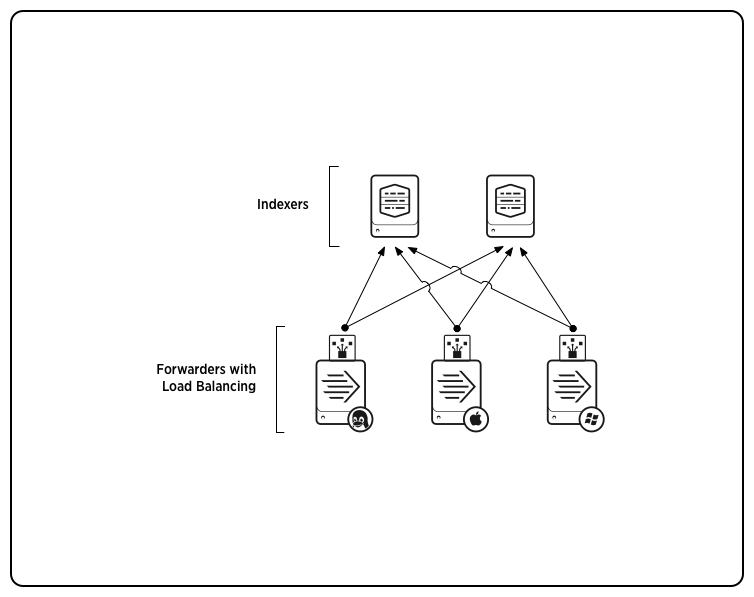
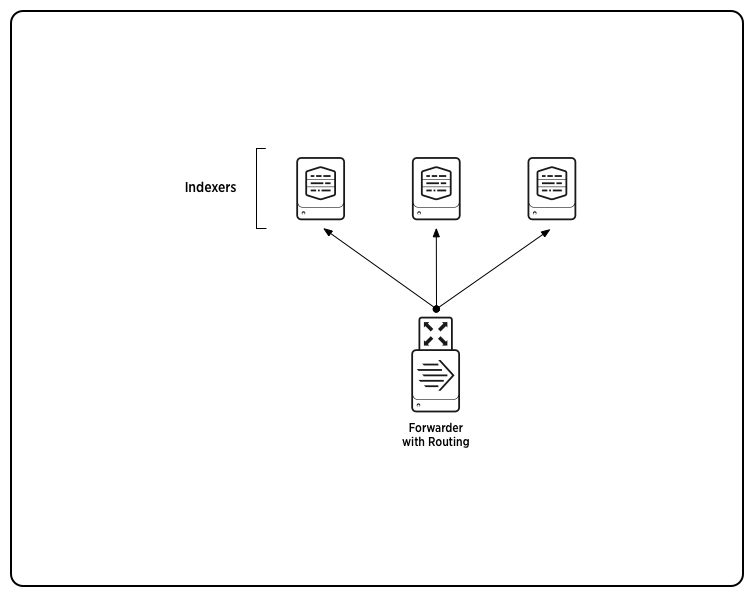
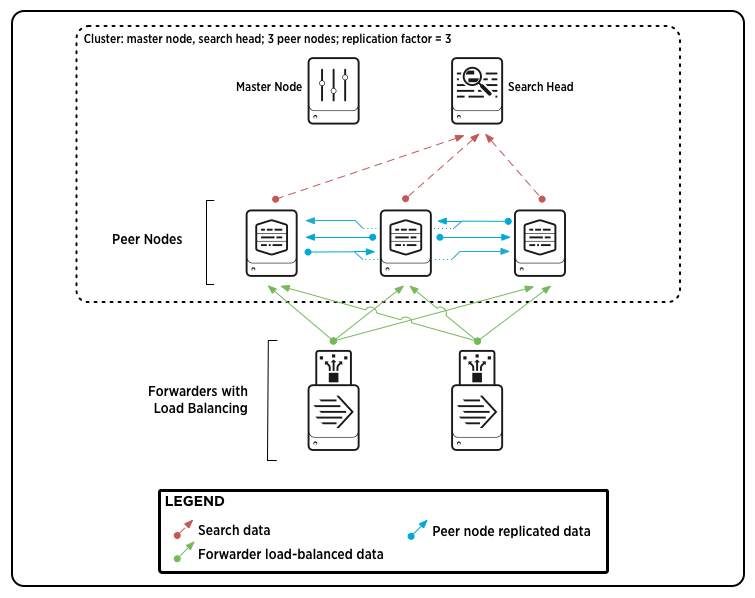
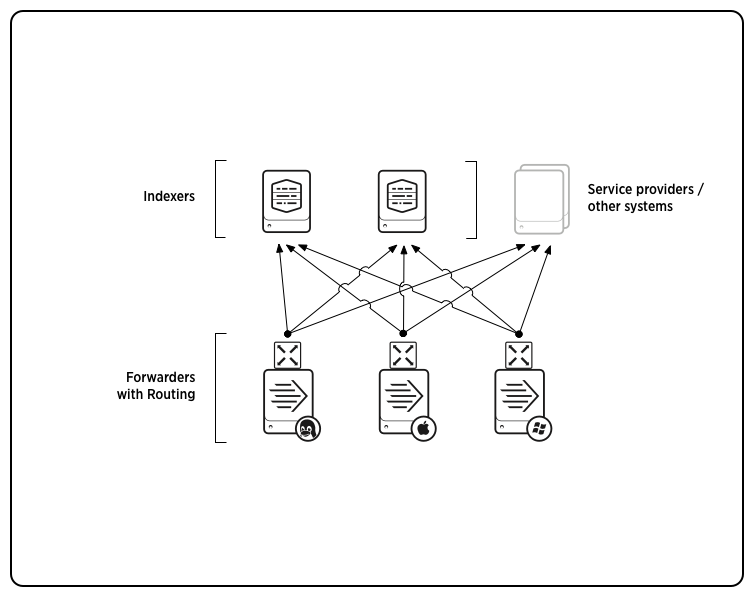



【推荐】国内首个AI IDE,深度理解中文开发场景,立即下载体验Trae
【推荐】编程新体验,更懂你的AI,立即体验豆包MarsCode编程助手
【推荐】抖音旗下AI助手豆包,你的智能百科全书,全免费不限次数
【推荐】轻量又高性能的 SSH 工具 IShell:AI 加持,快人一步
· 记一次.NET内存居高不下排查解决与启示
· 探究高空视频全景AR技术的实现原理
· 理解Rust引用及其生命周期标识(上)
· 浏览器原生「磁吸」效果!Anchor Positioning 锚点定位神器解析
· 没有源码,如何修改代码逻辑?
· 全程不用写代码,我用AI程序员写了一个飞机大战
· MongoDB 8.0这个新功能碉堡了,比商业数据库还牛
· 记一次.NET内存居高不下排查解决与启示
· 白话解读 Dapr 1.15:你的「微服务管家」又秀新绝活了
· DeepSeek 开源周回顾「GitHub 热点速览」